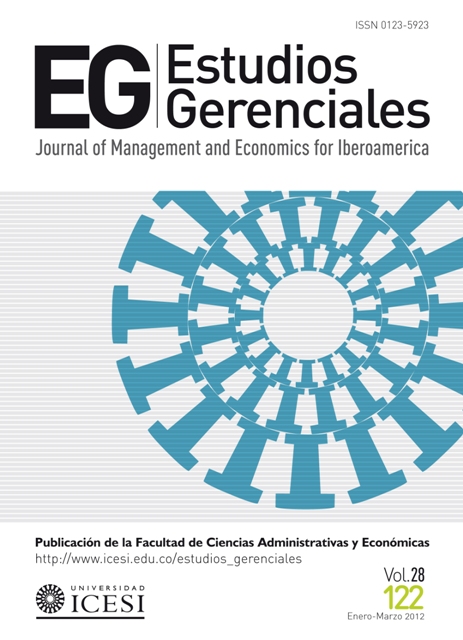CASE STUDY. GESTA DISEÑO® BRAND-PRODUCT DEVELOPMENT: AN INCREMENTAL INNOVATION CASE (Article published in Spanish)
DOI:
https://doi.org/10.1016/S0123-5923(12)70201-2Keywords:
Incremental innovation, brand-product, industrial design, Gesta Diseño®Abstract
The purpose of this case study is to guide the reader through the process of incremental innovationof a product. The path towards innovation starts with a review of design trends andends with a design brief. The case takes the company Gesta Diseño® as an example to illustratean innovation process that enhances brand representation. The framework of incremental innovationfor Gesta Diseño® assumes a small yet constant level of innovation which, supportedby brand image, allows the company to achieve a competitive advantage in the market. Themost relevant recommendation from this case is to use an incremental innovation strategy asan instrument to strengthen the brand of small companies.Downloads
References
Aguayo, F. y Soltero, V. (2003). Metodología del diseño industrial, un enfoque desde la ingeniería concurrente. México, D.F.: Alfaomega.
Alessi. (s.f.). Recuperado el 2 de febrero de 2011, de http://www.alessi.com/en
Alexander, D.L., Lynch, J.G. y Wang, Q. (2008). As Time Goes By: Do Cold Feet Follow Warm Intentions for Really-New vs. Incrementally-New Products? Journal of Marketing Research, 45(3), 307-319.
Christensen, C.M. y Bower, J.L. (1996). Customer power, strategic investment, and the failure of leading firms. Strategic Management Journal, 17, 197-218.
Dierickx, I. y Cool, K. (1989). Asset stock accumulation and sustainability of competitive advantage. The Institute of Management Sciences, 32(12), 1504-1511.
Grant, R. M. (2008). Contemporary Strategy Analysis (6a ed.). Oxford, UK: Blackwell Publishing.
Karjalainen, T. M. y Snelders, D. (2010). Designing Visual Recognition for the Brand. Journal of Product Innovation Management, 27(1), 6-22. doi: 10.1111/j.1540-5885.2009.00696.x
Levinthal, D.A. y March, J.G. (1993). The myopia of learning. Strategic Management Journal, 14, 95-112.
Lieberman, M.B. y Montgomery, D.B. (1998). First-movers (dis)advantage: retrospective and link with the resource-based view. Strategic Management Journal, 19(12), 1111 - 1125.
Lobach, B. (1981). Diseño industrial. Barcelona: Gustavo Gili.
Martínez, E., Polo, Y. y De Chernatony, L. (2008). Effect of brand extension strategies on brand image: A comparative study of the UK and Spanish markets. International Marketing Review, 25(1), 107-137. doi: 10.1108/02651330810851908
S+Arck. (s.f.). Recuperado el 2 de febrero de 2011, de http://www.starck.com/
Teece, D.J., Pisano, G. y Shuen, A. (1997). Dynamic capabilities and strategic management. Strategic Management Journal, 18(7), 509-533.
Utterback, J.A. (1987). Innovation and industrial evolution in manufacturing industries Technology and global industry: companies and nations in the world economy. Washington, DC: National Academy Press.
Winter, S.G. (2003). Understanding dynamic capabilities. Strategic Management Journal, 24(10), 991-995.
Ying, H. y Huddleston, P. (2009). Retailer premium own-brands: creating customer loyalty through own-brand products advantage. International Journal of Retail & Distribution Management, 37(11), 975-992.
Downloads
Published
Issue
Section
License
Articles are the sole responsibility of their authors, and will not compromise Icesi’s University principles or policies nor those of the Editorial Board of the journal Estudios Gerenciales. Authors authorize and accept the transfer of all rights to the journal, both for its print and electronic publication. After an article is published, it may be reproduced without previous permission of the author or the journal but the author(s), year, title, volume, number and range of pages of the publication must be mentioned. In addition, Estudios Gerenciales must be mentioned as the source (please, refrain from using Revista Estudios Gerenciales).








